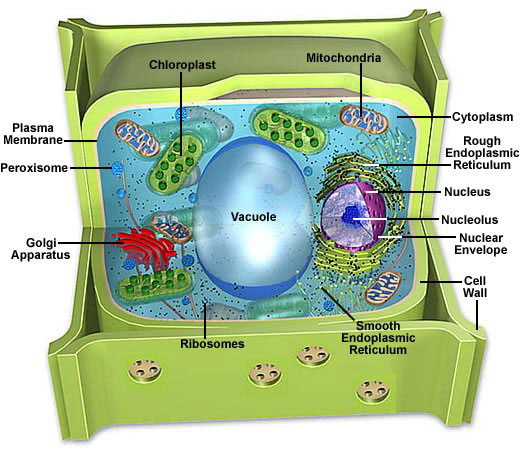|
Like other eukaryotes, the plant cell is enclosed by a plasma membrane, which forms a selective barrier allowing nutrients to enter and waste products to leave. Unlike other eukaryotes, however, plant cells have retained a significant feature of their prokaryote ancestry, a rigid cell wall surrounding the plasma membrane. The cytoplasm contains specialized organelles, each of which is surrounded by a membrane. Plant cells differ from animal cells in that they lack centrioles and organelles for locomotion (cilia and flagella), but they do have additional specialized organelles. Chloroplasts convert light to chemical energy, a single large vacuole acts as a water reservoir, and plasmodesmata allow cytoplasmic substances to pass directly from one cell to another. There is only one nucleus and it contains all the genetic information necessary for cell growth and reproduction. The other organelles occur in multiple copies and carry out the various functions of the cell, allowing it to survive and participate in the functioning of the larger organism.
|
